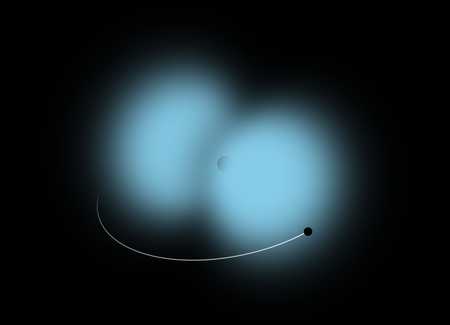Black hole binaries may unveil new particles

Gravitational waves emitted by the merger of black holes could carry information about the existence of new particles in nature. The mechanism that makes this possible is called “superradiance”. In this process, spinning black holes shed part of their mass and angular momentum to form a “cloud” of ultralight particles around them. The system consisting of the black hole and the cloud is often referred to as a “gravitational atom” and a representation can be seen in the picture above. Such ultralight particles are extremely difficult to detect in other experiments and gravitational waves open a unique avenue to search for them.
The gravitational atom, which shares a similar energy spectrum to the hydrogen atom, has extremely distinct characteristics when part of a binary system. The cloud can “jump” between different energy states, as well as be “ionized”, where part of the cloud is ejected. These effects leave sharp imprints on the emitted gravitational waves. How the cloud itself is impacted by these effects, and what the “history” of the system looks like throughout the evolution of the binary, was an open question until now.
In a new study, Strong member Thomas Spieksma together with collaborators from the University of Amsterdam (Giovanni Maria Tomaselli and Gianfranco Bertone) have shown that the evolution of the full system has only two possible outcomes. If the black holes and the cloud initially rotate in opposite directions, the cloud survives the inspiral in the state originally produced by superradiance, and it becomes directly detectable with future gravitational wave detectors. In all other cases, the cloud is destroyed early on in the inspiral, yet the binary’s orbit acquires very specific values of the eccentricity and inclination. Those quantities can then be detected indirectly with gravitational waves. These new results thus lay out a clear and novel search strategy for ultralight particles.
The legacy of boson clouds on black hole binaries, Giovanni Maria Tomaselli, Thomas F.M. Spieksma and Gianfranco Bertone. Physical Review Letters 133, 121402
Companion article: Physical Review D 110, 064048
